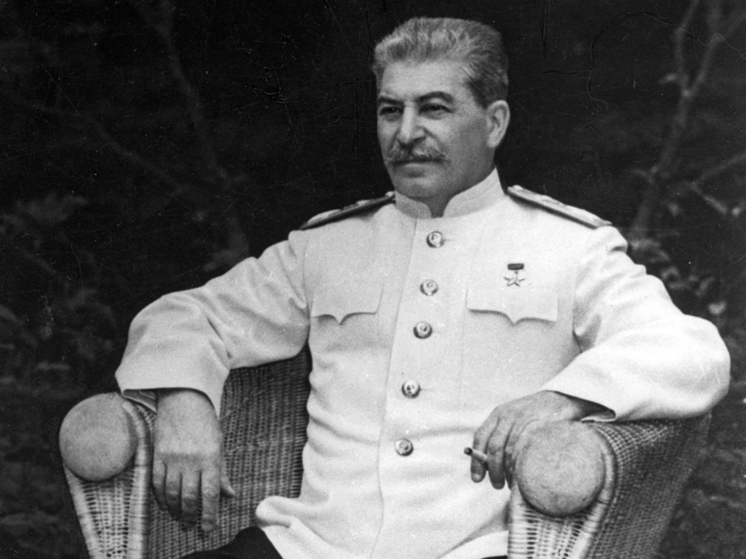Will Russia apply the experience of the USSR in achieving price stability
Annual inflation in Russia slowed by May 2 to 7.64% from the level of 7.82% on April 22, the Ministry of Economic Development reported. Reducing inflation to 4% is the goal of the Bank of Russia, to achieve which it is keeping the key rate at 16%. Meanwhile, the post-war “Stalinist miracle” demonstrated the decline in prices in 1948 — 1953 using completely different methods. How the USSR managed to cope with inflation in much more difficult conditions and whether this experience can be used today, “MK” discussed with the head of the analytical department of the BKF bank Maxim Osadchiy.

— Indeed, the post-war “Stalinist miracle” was not only a rapid economic recovery, but also a decrease in prices in 1948 — 1953, the famous “Stalinist deflation”. Moreover, it was possible to overcome inflation in much more unfavorable conditions than the current ones.
— Two years after the Victory, in 1947, the country’s finances were in a difficult state. Inflation went through the roof. The average price level by the end of 1947 was three times higher than the price level in 1940.
— Yes, and the reasons are clear. A significant part of the country's territory was occupied during several years of war, many collective farms, state farms and MTS were looted and destroyed. The “guns instead of butter” strategy led to food shortages, and mobilization led to labor shortages. It was necessary to feed and water a multi-million army. The fighters were encouraged not only morally, but also financially. For example, for a downed enemy bomber they paid 2,000 rubles, for a transport aircraft — 1,500, for a fighter — 1,000 rubles. For a destroyed enemy tank they paid 500 rubles. While the average salary in the Soviet Union in 1941 was 354 rubles. A significant part of these bonuses, as well as monetary allowances, ended up in military deposits. As of January 1, 1945, the field institutions of the State Bank of the USSR had deposits totaling 4.1 billion rubles.
On June 22, 1941, by decree of the Council of People's Commissars of the USSR, the population's deposits in savings banks opened before June 22, 1941 were blocked (frozen). From June 23, 1941, cash withdrawals from deposits were limited to 200 rubles per month (for the creative intelligentsia — 1000 rubles). This procedure was in effect until the beginning of 1944.
— A penny of that time can be considered equal to the current ruble.
— During the war, a huge monetary overhang arose, which put pressure on the economy and contributed to powerful inflation. Without eliminating this overhang, without “liposuction of the population’s wallets,” economic restoration was an impossible task.
— The miracle of “Stalinist deflation” began in 1947 thanks to the “Zverev reform.” (The name was given from the name of its initiator Arseny Grigorievich Zverev — a Soviet statesman, people's commissar, and then Minister of Finance of the USSR from 1938 to 1960 — editor's note). The money supply was sterilized by withdrawing “surplus money” from the population. This was primarily a confiscation reform. For deposits in savings banks, amounts up to 3 thousand rubles were exchanged one to one, for deposits from 3 to 10 thousand rubles, savings were reduced by a third of the amount, for deposits in the amount of over 10 thousand rubles, half the amount was withdrawn. The one who kept the cash received one new ruble for ten old ones during the exchange. Moreover, in this way they expropriated not only speculators who profited from the people’s grief, but also war veterans who received bonuses for destroyed enemy tanks and aircraft.
— Yes, it became the basis for a whole series of price reductions. There were six stages of price reduction in total; they took place from 1948 to 1953, every year in March — April. Prices for all goods after the last, sixth, reduction (from April 1, 1953), after the death of Stalin, turned out to be 55% lower than the prices of the fourth quarter of 1947.
— In to some extent it can. In the form of “liposuction of wallets” from corrupt embezzlers. And we are already partially observing this process. In addition, Stalin's experience of freezing deposits was used in a weakened form of “semi-freezing” of foreign currency deposits.
In addition, we did not mention other methods that were used during the Great Patriotic War and which contributed to the weakening of inflation. For example, taxes were sharply increased then. The rationing system also contributed to the weakening of inflation, as well as the fixation during the war of state retail prices in rationed trade, with the exception of prices for vodka, vodka products, grape wines, beer and salt.


